The Data
As all the testing in this round up was performed with the exact same equipment, using the exact same methods I have decided to keep each radiators page uncluttered by posting our testing methodology, test set-ups and equipment used in a single location. To see exactly how the tests were carried out, details of the test set ups and equipment used, please head back to the RRU’15 Test Equipment Page.
Restriction Test
It’s generally agreed that radiators are one of, if not the least restrictive components in the water cooling loop. There are some exceptions however, so this must still be verified through testing:
Here is the raw data at the tested flow rates, displaying the measured Differential Pressure across the PE 360 as flow rate was increased.
The table numbers indicate that the PE360 is a very low restriction radiator. However numbers in isolation can only tell half the story. By plotting against other components it more easily shows the whole story. I have decided to use a HeatKiller 3.0 CPU block as the reference in these plots for two reasons. Firstly there is no chance of the plot being cluttered by curves overlapping and secondly it gives a reference point against a fairly common loop component of average restriction. For radiator to radiator restriction comparisons please see the RRU’15 data pages. As with all the radiator restriction plots I have limited the maximum flow rate displayed to 2.0 GPM as I suspect there are very few systems that operate above 2.0 GPM. For more information on how to read a restriction plot check out our guide.
Now that we know how the PE did vs flow, we can take some of those data points and compare vs the competition:
The PE therefore is on the lower end of restriction and is perfectly acceptable.
Onwards to Thermal Performance!







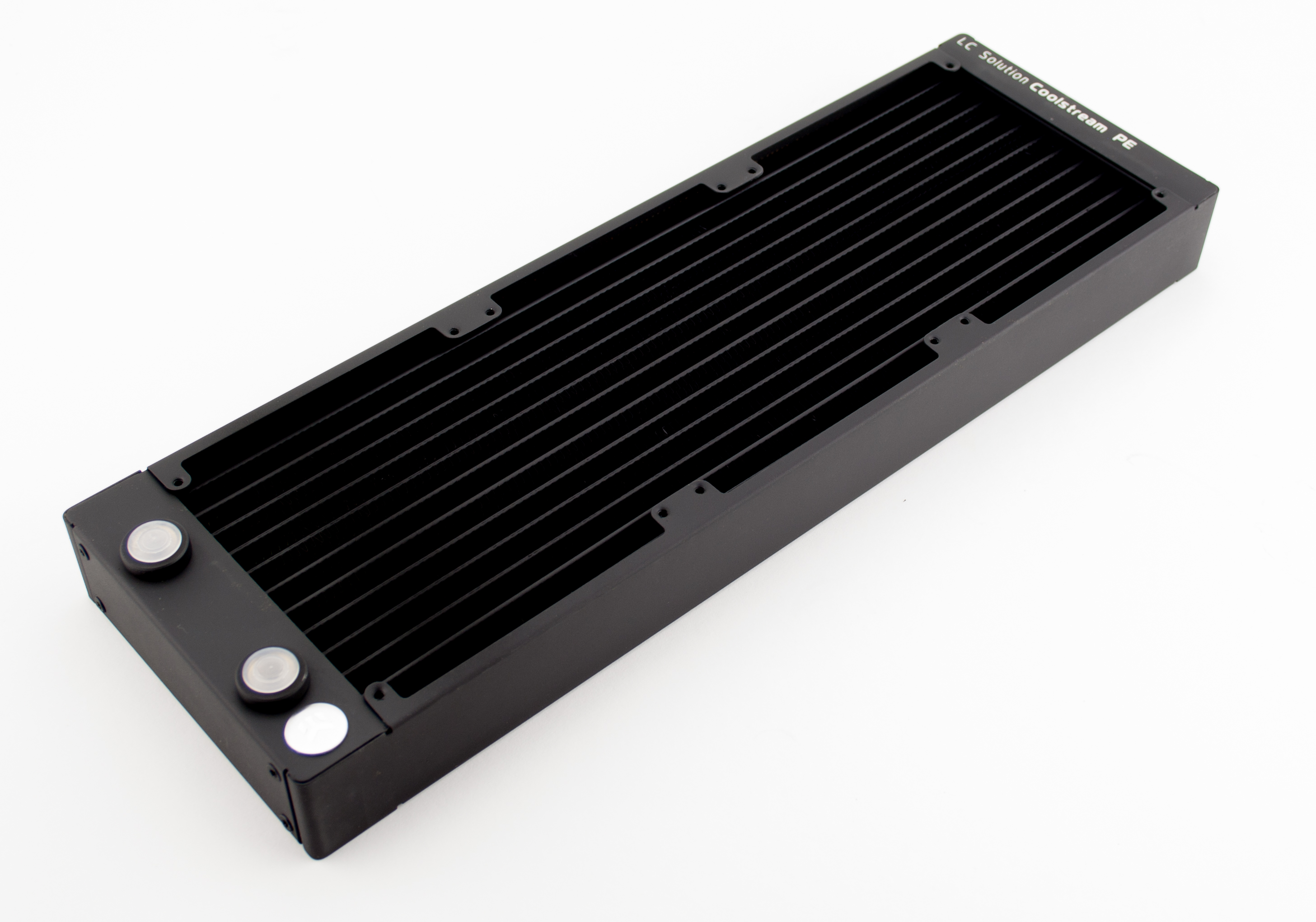
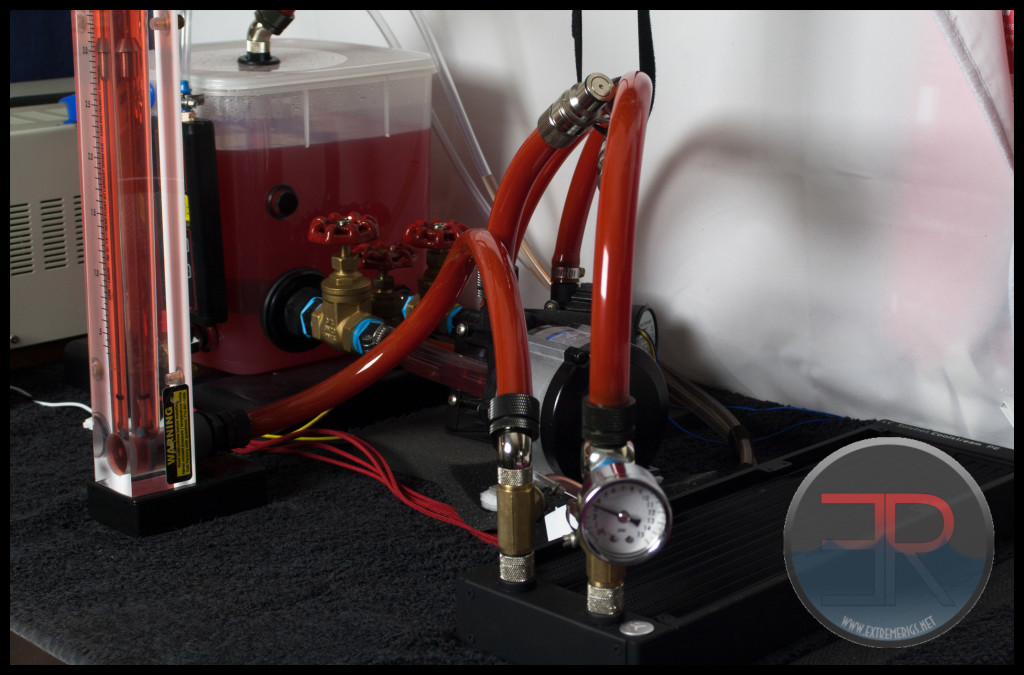
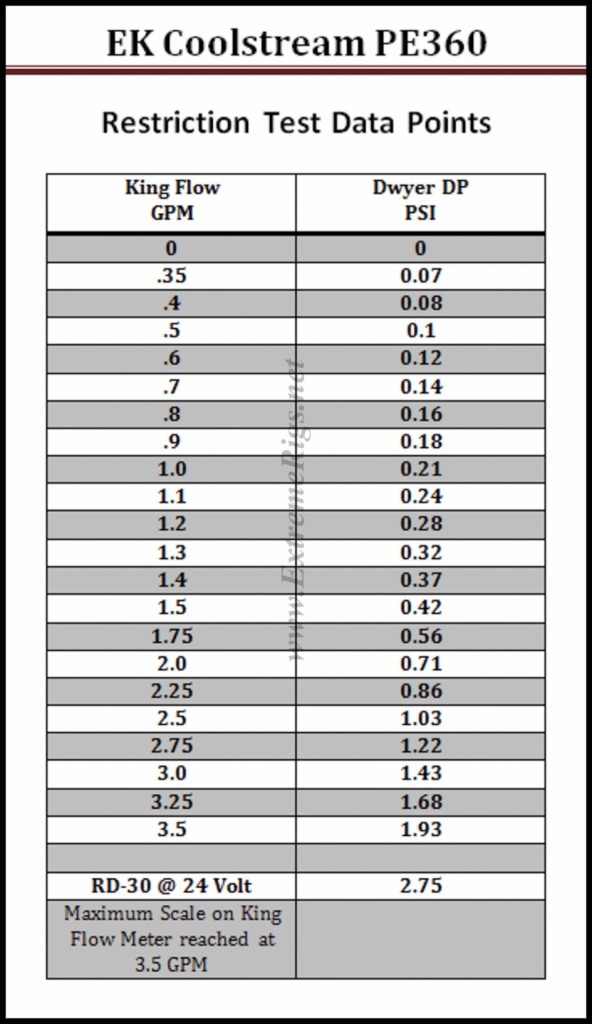
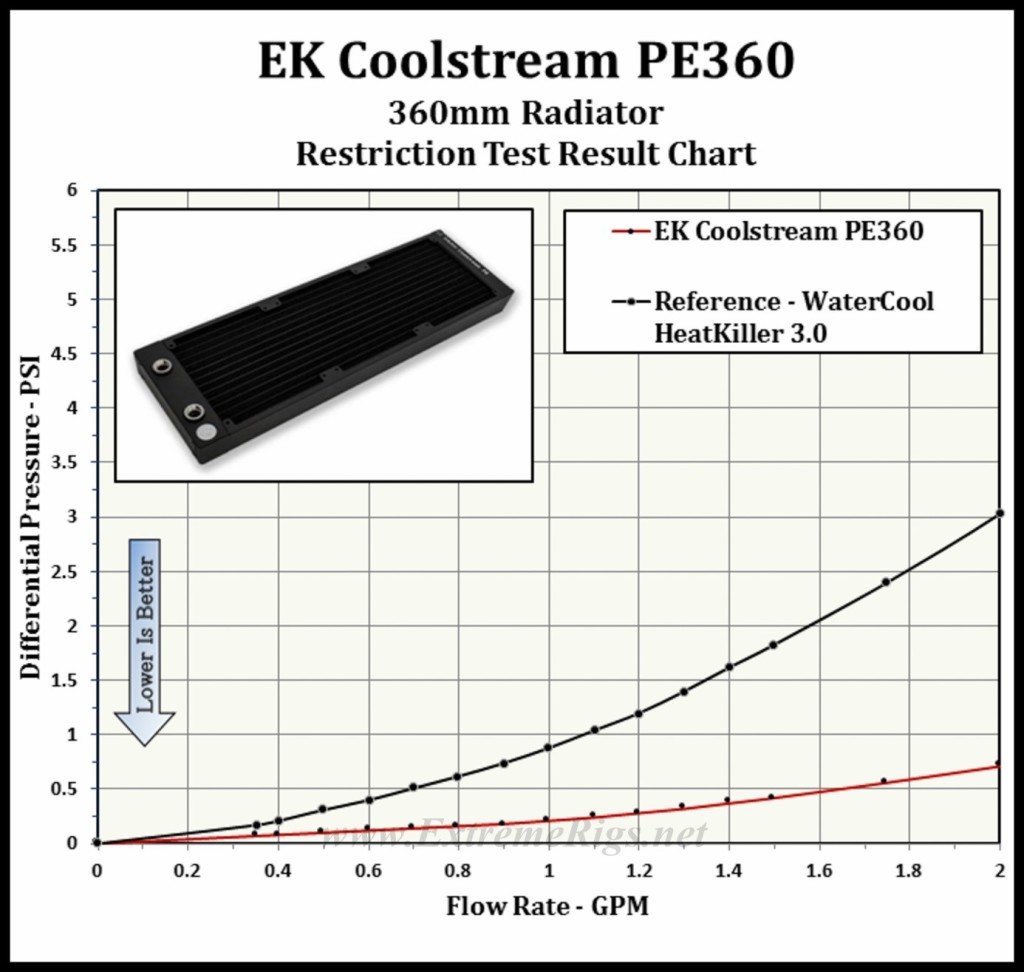
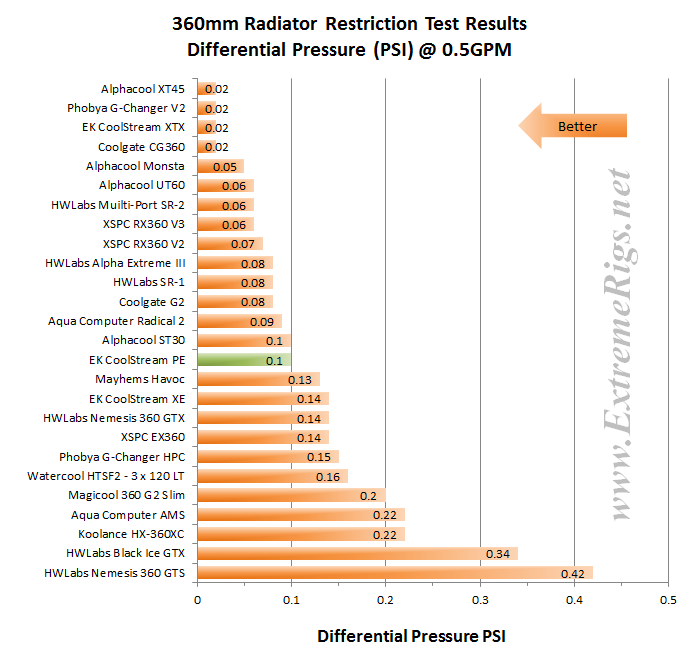
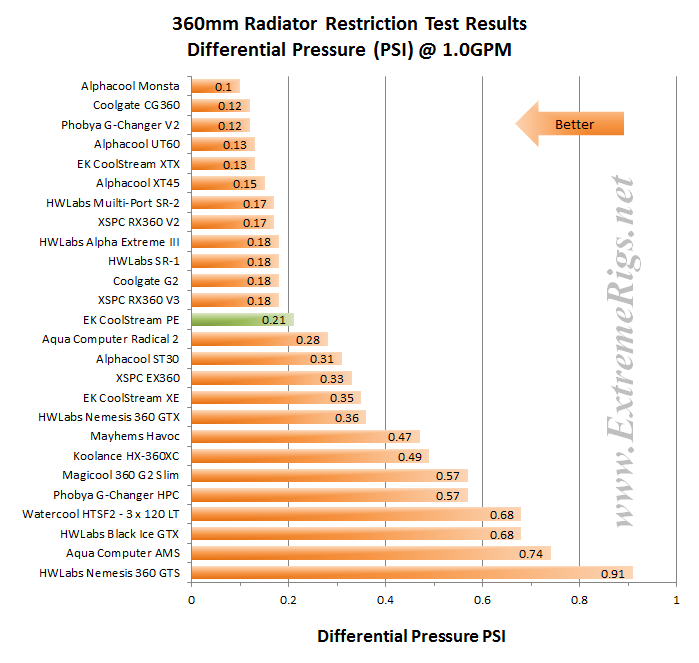
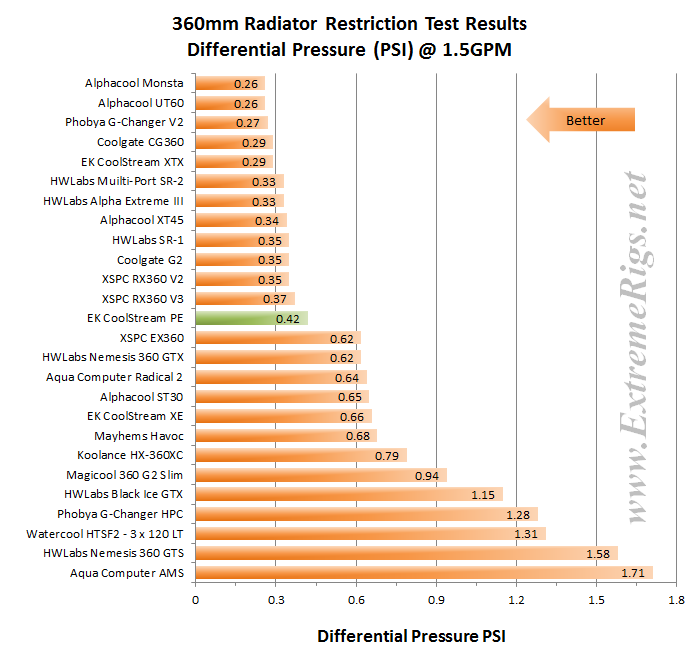




[…] UT60 360 Radiator Alphacool XT45 360 Radiator Coolgate G2 360 Radiator EK PE 360 Radiator Hardware Labs Alpha Extreme III 360 Radiator Hardware Labs Nemesis GTS 360 Radiator Hardware Labs […]
[…] MX block which performed very well in our testing and added a modified version of their PE radiator with a low power DDC pump attached. EK’s excellent compression fittings and ZMT tube is […]
Comments are closed.